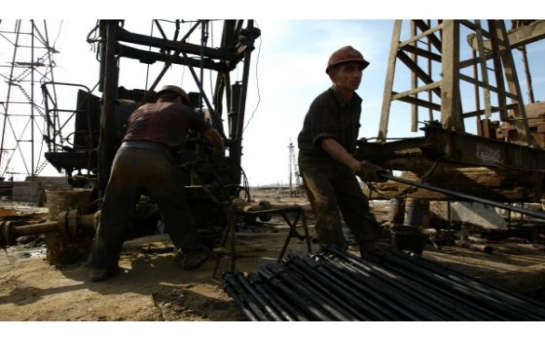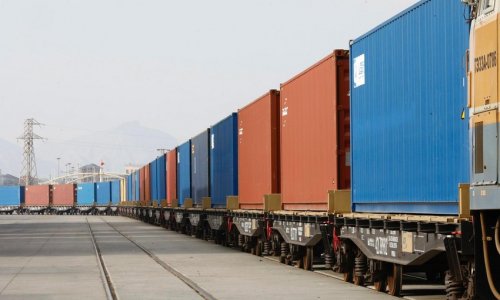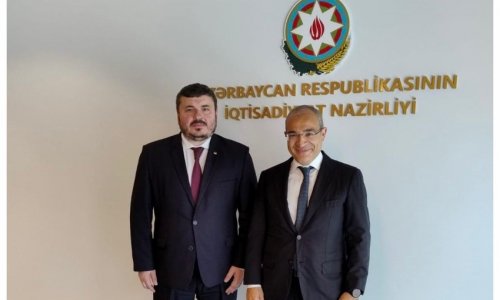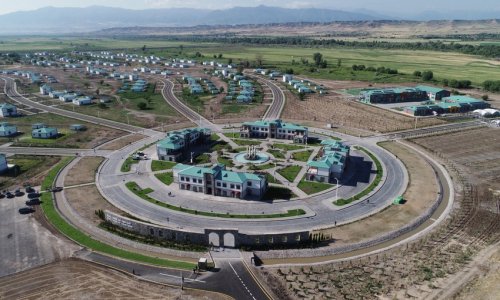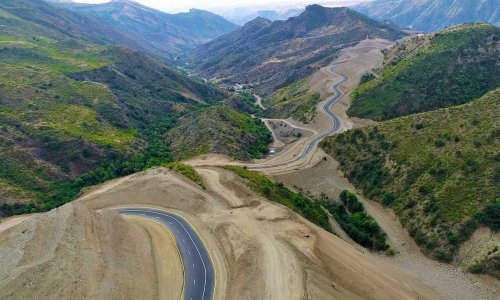(Economist Intelligence Unit) -- POLITICAL STABILITY: Ilham Aliyev, who has been in office since 2003, won a third term as president in October 2013 and is expected to retain a strong grip on power throughout the forecast period. The government is willing to suppress popular protest by force if necessary and has recently imposed further limits on the media. The opposition does not yet pose a risk to the status quo, but the administration is likely to face greater public dissatisfaction during 2014-18, as economic growth will be weaker than in the boom years of 2000-08. Income inequality and corruption are becoming increasingly pressing social issues. If the economic situation turns out to be worse than The Economist Intelligence Unit currently forecasts, there is a significant risk of protests of the kind that occurred in the town of Ismayilli in January 2013.
ELECTION WATCH: According to the official results published by the Central Election Commission, Mr Aliyev won 84.5% of the vote in the presidential election on October 9th 2013. Camil Hasanli, the candidate of the NCDF, received 5.5%. Eight other candidates also participated. Mr Hasanli was the only one who could be credibly seen as an opposition figure; the others were essentially "virtual" candidates whose participation was intended to create the appearance of a political contest. The pre-election environment was characterised by significant restrictions on freedom of speech and assembly. The opposition complained that television and radio coverage was heavily skewed in favour of the incumbent.
INTERNATIONAL RELATIONS: Azerbaijan remains locked in an intractable conflict with Armenia over the territory of Nagorny Karabakh, which is controlled by Armenian-backed forces following a war in the early 1990s. The line of control is heavily militarised on both sides. A dramatic escalation in crossborder violence in late January 2014 led to the deaths of at least one Armenian and two Azerbaijani soldiers. This all but nullified recent progress in peace talks and served to underline the precariousness of the current ceasefire arrangement, which is only intermittently monitored by a small international mission. Nevertheless, the likelihood of the conflict tipping back into open war is low.
POLICY TRENDS: Azerbaijan is at a turning-point in its development. Output from the oil sector, which has driven rapid growth over the past decade, will be flat over the forecast period. We also expect oil prices to fall in 2016-18. As a result, state spending growth will be limited, unless the government starts to draw down on the State Oil Fund of the Republic of Azerbaijan (SOFAZ). SOFAZ is intended to operate as a sovereign wealth fund, but has come to function more as a component of the annual budget, as transfers from the fund now account for almost 60% of total budgetary revenue (although to date these have been lower than total SOFAZ revenue, allowing the oil fund to grow).
ECONOMIC GROWTH: Real GDP at factor cost grew by 5.8% year on year in 2013 according to initial figures, up from 2.2% in 2012. Growth picked up from the first half of 2013--when it was 5% year on year--owing to the recovery of the extractives industry. After falling by 4.6% year on year in the first quarter, oil production has gradually recovered in year-on-year terms, posting modest annual growth of 0.2%. The short-term outlook for the economy is positive and there is evidence that domestic demand remains robust, with the non-oil sector growing by 10% in 2013.
INFLATION: Annual average inflation in 2013 stood at 2.5%, well below the 5-6% target corridor of the Central Bank of Azerbaijan (CBA). However, prices increased at their fastest rate for almost two years in December. Strengthening core inflation suggests that the output gap has narrowed and supply factors may start to push up prices in 2014. However, this will be partly counterbalanced by slower credit creation and tighter fiscal policy, with public expenditure due to rise by just 1% in 2014, compared with 17% in 2013. As a result, although inflation is expected to pick up to an annual average of 5.5%, it will remain low in historical terms. We also expect the manat to remain stable against the US dollar, despite the tapering of asset purchases by the Federal Reserve (Fed, the US central bank), which will limit growth in import costs. Throughout the forecast period, slower growth of domestic demand and smaller rises in public spending compared with historical averages will help to limit inflationary pressures, keeping the growth in consumer prices below the 8% average recorded in 2003-12. However, inflows of oil-related foreign exchange will continue to exert upward pressure on prices. We forecast annual average inflation of 6% in 2015-18.
ANN.Az

